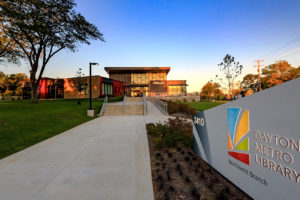Branding: The Silent Partner, Part IV
In the final post of this series, Branding: The Silent Partner, we’ll look at how facility administrators and managers can leverage signage to promote a hospital’s brand. We’ve already examined how signage can function in a hospital as a brand promoter in the minds of patients, visitors and guests, and nurses and doctors. Perspective is key when examining how signage can work to promote a business’ brand. Different groups of people will respond to signage in different ways. When hospital personnel understand how branding through signage functions according to the various perspectives of people who use the facility, then the hospital can more effectively implement architectural signage as part of its branding efforts.
View the previous entries in this series:
Teamwork
When used as a brand promoter, signage can contribute to a feeling of teamwork among facility administrators and managers, whose primary job duties and paramount considerations have to do with ensuring that the hospital runs smoothly. Well-designed signage that brands the hospital as a facility in which administrators and managers can effectively perform their functions helps with retention of key people. For any facility to function smoothly, the people who manage it must work cooperatively and not in conflict. Signage that brands a health care facility as one in which decision-makers are on the same team and work for the benefit of all who interact with the hospital will increase these people’s pride in their work in smoothly running day-to-day operations.
Cohesiveness
Well-designed, effectively implemented signage also enhances a sense of cohesiveness in the minds of administrators and managers at a health care facility. When signage expertly does its job with regard to facilitating wayfinding and information-sharing, it brands the health care facility as cohesive in its various functions, whether day-to-day administrative duties to interactions that administrators and managers have with doctors and nurses and with patients, guests and visitors. For a facility to operate with maximum efficiency, all groups of people must trust in one another’s competency. Signage that presents – brands – that facility as a trustworthy establishment will ratchet up a sense of mutual camaraderie and helpfulness among all groups. This is particularly important in the minds of managers and administrators, decision-makers whose choices influence everybody else who works at or interacts with the hospital.
Consistency
Closely related to teamwork and cohesiveness is the idea of consistency, another concept that’s particularly important to administrators and managers. Exterior and interior signage that works to promote a hospital’s brand as a consistently high-quality health care facility helps motivate decision-makers such as administrators and managers to endeavor to make the best, most responsible decisions for the facility as a whole, affecting both people who work there and people who seek medical treatment. The aesthetic appeal of signage plays into the importance of demonstrating across-the-board consistency, as does the efficacy of signage for wayfinding.
Since facility administrators and managers function as decision-makers, they are relied on, in some form or fashion, by all other groups who interact with the hospital. In the minds of decision-makers, branding functions as the hospital’s silent partner. Architectural signage that brands a health care facility as reliable in the minds of administrators and managers can work to increase these people’s own sense of solidity and reliability in handling the day-to-day decisions, major and minor, involved in their administrative work.


